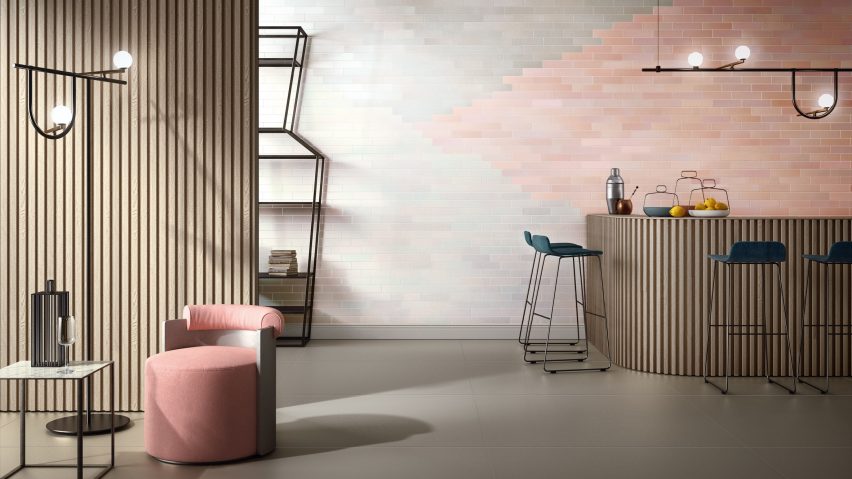Dezeen promotion: designer studio Formafantasma worked with colours previously used by prolific architect Ettore Sottsass to create this range of tiles, which can be used to give ombre effects to surfaces.
Amsterdam-based Formafantasma created the Cromatica collection for CEDIT Ceramiche d'Italia – an Italian ceramics brand that saw success in the 1950s, 60s and 70s, and has recently relaunched with collections by a range of prominent designers, architects and artists.
To pay tribute to the brand's heritage, Formafantasma's Andrea Trimarchi and Simone Farresin decided to revisit one of its past designs. After delving into the archives, they found a range of ceramic glazes that postmodern architect Ettore Sottsass developed in the 1990s.
These glazes formed the basis for Cromatica. The collection is available in six colour sets, including shades of pink, blue and green, and is available in both glossy and matt finishes.
Within each colour set, a range of tones is possible, from pale hues to more vibrant shades. As a result, the tiles can be used to create subtle gradients.
The designers came up with this idea after becoming interested in the shade variation that once would have been unavoidable, thanks to the imperfections of historic manufacturing processes.
"The manufacturing technology of ceramic tiles has made it possible to produce increasingly larger sizes and brighter colours," explained CEDIT. "But at the same time, the production process' industrialisation has eliminated the flaws that, although unintentional, used to give character to surfaces."
"With the Cromatica collection, Formafantasma investigates fresh possibilities provided by the 'colour factor' in contemporary ceramic manufacturing."
Trimarchi and Farresin are known for their experimental approach to design. Past projects include furniture out of lava from Mount Etna, and homeware made from animal products like cow bladders and fish skin.
However, their Cromatica tiles are more in keeping with some of their more sensitive colour-focused projects, like many of their lighting projects.
"This work is a reflection on colour and above all on how to bring the multiplicity of shades typical of a handcrafted piece to a large-scale project," said Formafantasma.
These tiles come as large-scale panels, but can be cut up into smaller tiles if desired, to create more bespoke patterns.
CEDIT Ceramiche d'Italia was first established in 1956 and collaborated with figures such as Alessandro Mendini and Marco Zanuso. The brand relaunched in 2016 and has since collaborated with architects and designers including Martino Gamper, Matteo Nunziati and Archea Associati.
To find out more about the Cromatica tiles, visit CEDIT's website.

